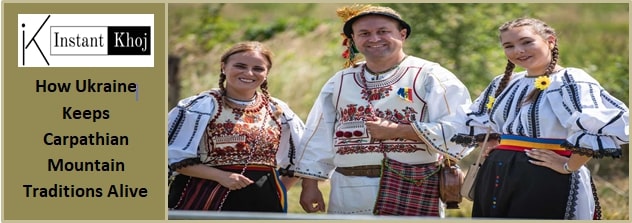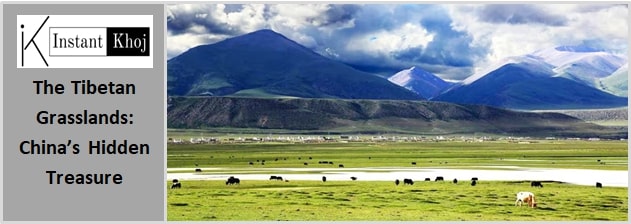The Carpathian Mountains in Ukraine are a region of remarkable natural beauty and profound cultural heritage. This mountainous landscape is home to the Hutsuls, an indigenous ethnic group whose traditions, crafts, music, and architecture have flourished here for centuries. These cultural treasures, however, face growing challenges from modernization and environmental pressures. In response, innovative eco-tourism initiatives are emerging as a vital strategy to protect both the unique natural environment and the rich cultural fabric of the Carpathians, offering a sustainable path forward for the region.
The Cultural Heart of the Carpathians
The Hutsuls have inhabited the Ukrainian Carpathians for hundreds of years, developing a lifestyle that is deeply connected to the rhythms of the mountains. Their identity is reflected in a wide array of cultural expressions that continue to thrive today. Among the most notable are their traditional crafts—such as wood carving, weaving, embroidery, and pottery—which are distinguished by intricate patterns and techniques passed down through generations.
One of the most recognizable symbols of Hutsul culture is their wooden architecture. This includes homes, churches, and community buildings constructed using traditional carpentry methods without nails, relying on precisely crafted joints instead. These wooden structures not only demonstrate extraordinary craftsmanship but also harmonize with the surrounding natural environment, blending the human presence seamlessly into the forested slopes.
Music also plays a crucial role in Hutsul life. Their folk songs, dances, and musical instruments—particularly the trembita, a long wooden alpine horn—are a living archive of their history and values. Traditional festivals and ceremonies keep these musical traditions alive, fostering a strong sense of community and cultural pride.
Challenges to Tradition and Nature
Despite their rich cultural heritage, the Hutsuls and their environment face significant challenges. Rapid modernization and economic change are causing younger generations to migrate from the Carpathians to urban areas in search of education and employment opportunities. This demographic shift threatens the continuity of traditional skills and lifestyles.
At the same time, the natural environment of the Carpathians is under pressure. Illegal logging, habitat loss, and the impacts of climate change pose risks to the fragile mountain ecosystems that sustain the Hutsul way of life. The forests, rivers, and pastures that provide resources for traditional crafts and agriculture are diminishing, compounding the threats to this ancient culture.
Eco-Tourism: A Sustainable Solution
In light of these challenges, eco-tourism has emerged as a promising approach to preserve the Carpathian Mountains’ cultural and natural heritage. Unlike mass tourism, which can lead to environmental degradation and cultural commodification, eco-tourism focuses on sustainable practices that support conservation efforts and respect local communities.
Various projects across the Ukrainian Carpathians now offer tourists opportunities to experience Hutsul culture firsthand in ways that benefit local residents and the environment. Visitors can participate in workshops on traditional crafts such as woodcarving or weaving, learn to play folk instruments, or join guided hikes through the pristine mountain landscapes led by knowledgeable local guides.
Many eco-tourism initiatives emphasize stays in traditional wooden guesthouses, which offer authentic experiences while encouraging the maintenance of historical architecture. This model not only helps preserve the built heritage but also generates income for local families, reducing the incentive for migration.
Cultural Preservation Efforts
Beyond tourism, dedicated organizations and cultural activists are working tirelessly to document and preserve Hutsul traditions. Efforts include recording oral histories, archiving folk songs and stories, and supporting artisans by connecting them with markets both within Ukraine and internationally. These initiatives help ensure that the knowledge and skills of the Hutsuls are not lost to time.
Simultaneously, there is growing attention to conserving wooden architectural monuments. Restoration projects are underway to protect churches and historic homes from decay, often with the support of both Ukrainian authorities and international heritage organizations.
The Broader Significance
The preservation of the Carpathian Mountains’ traditions is more than a local or national issue; it is part of a global movement to protect indigenous cultures and natural environments under threat. The Hutsuls’ sustainable relationship with their landscape offers valuable lessons in resilience and environmental stewardship.
Moreover, promoting eco-tourism in the Carpathians aligns with Ukraine’s broader goals of sustainable development, rural revitalization, and cultural promotion. By attracting mindful travelers interested in authentic experiences and responsible tourism, the region can balance economic growth with the protection of its priceless heritage.
Conclusion
The Carpathian Mountains of Ukraine stand as a living testament to the harmonious relationship between people and nature. The Hutsuls’ vibrant traditions—expressed through crafts, music, and architecture—are deeply embedded in this landscape. With the support of eco-tourism and dedicated preservation efforts, these cultural treasures can be safeguarded for future generations while fostering sustainable development.
By protecting both the natural environment and the intangible heritage of the Hutsuls, Ukraine is setting an example of how communities can honor their past and build a resilient, sustainable future. The Carpathian Mountains remain a shining beacon of cultural richness, inspiring visitors and locals alike to cherish and protect this unique mountain heritage.




